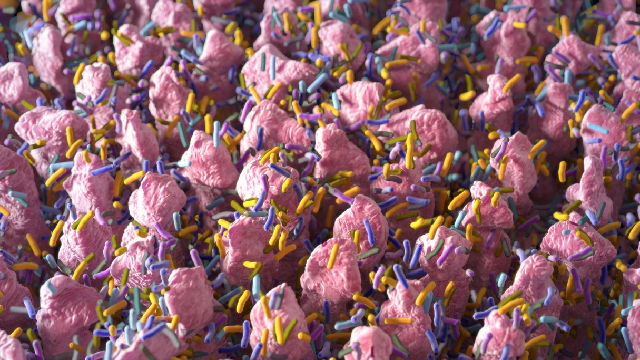Every year on June 27, World Microbiome Day is a chance to showcase what microbes are and their importance in health and everyday life.
This brief article demonstrates the importance of an understanding of microbes and microbiomes by both scientists and society. It is well suited to Biology students in senior secondary but is also suitable to year 8, 9, and 10 students.
Word Count: 785

Why This Matters: Our tiny mates could have a huge impact on our health and wellbeing.
It was until only a few decades ago that our knowledge of the human microbiome was based on what could be grown in a petri dish.
And yet our understanding of microbes began much earlier. In the early 1880s Robert Koch and Fannie Hesse isolated and grew the bacterial pathogen that caused tuberculosis. Then, a couple of years later, Theodor Escherich discovered that microbes could be part of the normal gut environment when he isolated a bacteria called Escherichia coli from the stools of both healthy and sick children.
The development of DNA sequencing in the 1970s and another type of sequencing based on the 16S rRNA gene shortly after, gave us the first glimpses into the extent of the microbial diversity present in the world around and inside us.
Despite this long history, it was not until the early 2000s when sequencing technology became cost effective enough for widespread use that we started to realise the microorganisms in the human body are an essential part of us, and intricately linked with our health.
The turning point for microbiome research
In the last couple of decades, we’ve seen three big advances in the area of the gut microbiome. Firstly, it was the discovery that the gut had a much richer collection of microbes than ever suspected. Once that was realised, scientists began associating changes to the gut microbiome with a wide range of diseases, and that there were a range of factors that could alter the makeup of the microbiome itself.
Some of these factors are out of our control such as genetics, age, geography, and ethnicity. However, many of the most influential factors are things that we can control, including diet, medication use, stress, exercise, and smoking.
Also: Sleep and the Microbiome
One of the tools that helped scientists realise the incredible diversity that lived in our gut was a new type of genetic sequencing called shotgun metagenomics. Allowing researchers to look at the entire genome of microorganisms, they started discovering thousands of new bacterial species and strains. The analysis also revealed the bacteria’s functional genes, in part revealing what they were capable of doing.
And that threw up some surprises, changing our perspective on their possible role in our body. Microbes inhabiting our gut have a far larger catalog of genes to produce various proteins compared to our human cells. In terms of numbers, we have between 20,000-25,000 genes in the human body – together, the gut microbiome has around 22 million.
This means our gut bacteria can break down a much wider range of compounds and produce a far broader range of substances than our human cells can.
What the microbiome means for disease
It therefore may come as no surprise that the gut microbiome has a significant influence over various diseases.
Given their presence in our gut, naturally some of these conditions are gut-related, such as inflammatory bowel disease and colon cancer. However their influence isn’t just local – the gut microbiome has also been linked with other conditions including diabetes, cardiovascular disease, arthritis, neurodegenerative diseases and even mental disorders.
However, the unanswered question for many of the conditions is whether the disease causes the change in the gut microbiome, or if the change in the gut microbiome itself causes the disease?
For the majority of diseases linked to the gut microbiome, this question of causality is still up in the air.
We are truly only seeing the tip of the iceberg right now when it comes to understanding how the gut microbiome is involved with our health. It suggests that in the future, we may be able to prevent and maybe even treat some diseases, simply by changing our gut microbiome.
Making these changes may not even require drastic action. Small changes to our lifestyle to promote a healthy gut microbiome may help contribute to disease prevention.
Researchers are also interested whether the microbiome makeup could be a diagnostic tool. If the gut microbiome is different in people with a disease state, can we use those differences to predict if someone has that disease or may be at a high risk of developing it? And if we can identify what is different in the gut microbiome in someone who is sick compared to someone who is healthy, would changing that part of the microbiome help alleviate symptoms or change progression of the disease?
Far from being hitchhikers, as we find out more about the microbes that live with us scientists are finding out their influence over our health. And understanding that, and being able to step in when things go awry, may become one of the biggest medical revolutions in history.
Login or Sign up for FREE to download a copy of the full teacher resource





